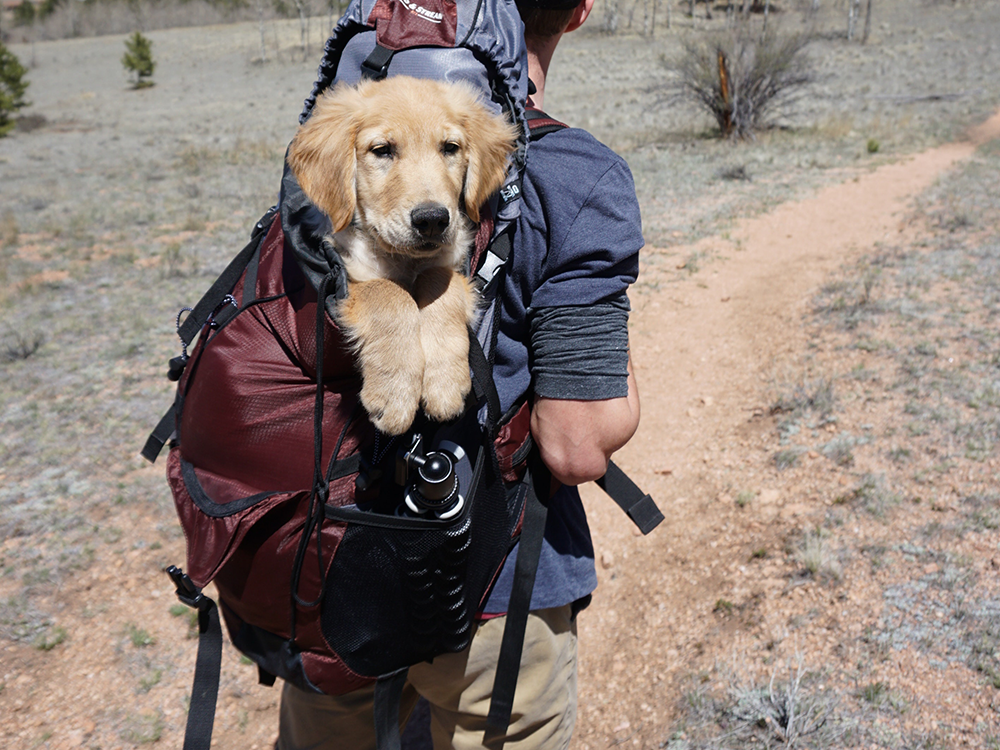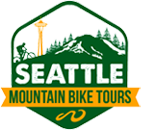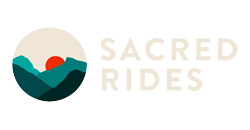Please see our FAQ page for answers to other questions that travelers frequently send us.

Photo by Spencer Gurley from Pexels
Being prepared means staying warm, dry, and comfortable so you can focus on having fun.
Locals agree that one of the best things about this region is that the weather is rarely extreme. As a temperate maritime climate, the Pacific Northwest enjoys warm & sunny summers, mild temperatures in the spring and fall, and cool winters that rarely drop to freezing or below. Our moderate gear and clothing needs don’t vary too drastically from one season to the next.
On all of our tours, we provide water, sparkling water, snacks, and more. On full day tours we generally provide a seasonal gourmet lunch. We also bring snowshoes when necessary and always carry first aid equipment.
You only need to bring your own clothing, camera, and necessary medications.
While not necessary, feel free to bring a day pack for your personal items. If you do not have the clothing or gear you need – give us a call. We have some clothing, waterproof clothing, hats, and gloves that we can loan you when available and we offer waterproof hiking boots to rent if you don’t have or don’t want to travel with your own boots.
National Park Tours
Summer (July- September)
Mountains – In the peak summer months (July to September) it is typically pleasantly warm up in the mountains (in the upper 50’s to lower 70’s). However, the weather can change very rapidly at high elevations and is unpredictable, so no matter how sunny and warm it may be, we always advise you to bring a warm jacket.
Coast – The weather at this time of year is typically beautiful on the coast. It will occasionally rain, but for the most part the sun is shining daily and the only concern is the wind chill. However, please always be prepared for rainy weather and for cool winds.
Our Suggestions:
- Top – wear lightweight and breathable long or short sleeve layers with a light jacket
- Even if it calls for warm weather, high elevations, early mornings or areas around water can be much cooler than expected.
- Bottom – wear light hiking or activewear pants, and avoid cotton or denim
- Shoes – wear hiking boots or shoes, durable sneakers are ok but ensure they are shoes that you don’t mind if they get a bit muddy or dusty.
- DO NOT WEAR – Sandals, flip flops, clogs, ballet flats, crocs, or leather shoes or loafers
- Jackets – bring a lightweight fleece or jacket and a rain shell
- Even though July-September are our driest months of the year, dry weather is never guaranteed in the Pacific Northwest
- Accessories – Hat with a visor and sunglasses
- The UV rays at high elevations are much more intense, so even if you come from a warm sunny climate, please wear sun protection to prevent buring
- Backpack – You may wish to have a small daypack with you to keep personal items, accessories, extra layers and water nearby
Spring and Autumn (Mid-May – June + Late September – October)
Mountains – During this time the weather is relatively cold in the mountains. There will be some snow on the ground at high elevations so please be prepared.
Coast – Rain is common in the fall and spring in the Pacific Northwest and the coastline is windy during this time of year. Please bring a rain jacket to block the wind and rain.
Our Suggestions:
- Top – wear wool or synthetic long or short sleeve top. Layer over your shirt with a warm jacket (avoid cotton sweatshirts) and a waterproof rain jacket.
- Bottom – wear hiking or activewear pants made of synthetic materials (not cotton or denim) so that they are comfortable and quick drying.
- Shoes – wear sturdy waterproof hiking boots. Sneakers are not recommended because the high elevations will still be covered in snow until late-June and again in mid-October.
- DO NOT WEAR – Mesh sneakers, sandals, flip flops, clogs, ballet flats, crocs, or leather shoes or loafers.
- If you do not have appropriate footwear for your tour, we offer waterproof boot rentals available with advance notice.
- Jackets – bring a mid-weight fleece or jacket and a rain shell
- Accessories – Hat with a visor and sunglasses or a beanie and gloves depending on the day.
- Backpack – You may wish to have a small daypack with you to keep personal items, accessories, extra layers and water nearby.
Winter (November – Mid-May)
Mountains – The weather can be quite cold and there is a lot of snowfall in the high mountains. The temperatures can be 15-20 degrees Farenheit colder than you will experience in Seattle. It is important for your safety and comfort and the enjoyment of the group that you dress appropriately for the tour. Avoid cotton materials like shirts, sweatshirts and denim jeans. These will not keep you warm enough for this climate. See our recommendations below and reach out to us if you need to borrow anything for your tour day.
Coast – It is cold and windy and often times rainy at this time of the year. Insulating and waterproof layers are essential to stay comfortable. Opt for breathable materials (no cotton) and be prepared for changing conditions.
Our Suggestions:
- Top – Layers are your friend! For optimal warmth and comfort follow these guidelines
- Layer 1 – Wear a wool or synthetic long sleeve base layer shirt (avoid cotton shirts or sweatshirts)
- Layer 2 – Mid layers should be made of fleece, wool or soft shell materials
- Layer 3 – Insulate with a down or down synthetic jacket
- Layer 4 – Make sure to wear a waterproof exterior jacket or raincoat (some jackets have your insulation and waterproof shell built into one!)
- Bottom – Wear warm hiking pants made of synthetic materials (not cotton or denim,) so that they are breathable, lightweight and quick drying. Wear a pair of long johns or an insulating base-layer underneath your pants for warmth and if you have ski or rain pants to layer over your pants, bring those along to keep you dry
- Shoes – Waterproof snow or hiking boots are required for our winter snowshoe tours. This is for your safety as much as your comfort. Sneakers, Crocs, sandals, flat-soled or soft-sided shoes are not allowed.
- If you do not have proper footwear or do not want to travel with your boots, we have waterproof boot rentals available with advance notice. Please reach out to our team to organize this.
- We also recommend thick warm (non-cotton) socks to keep your feet warm.
- Accessories – Bring a warm pair of gloves, a scarf, and a warm hat. We also recommend bringing an extra pair of dry socks for the drive home in case your shoes collect any snow along the way, you’ll be glad you did!
- Backpack – You may wish to have a small daypack with you to keep personal items, accessories, extra layers and water nearby
If you are concerned about having the appropriate gear to keep you safe and comfortable on a winter tour in the mountains, please contact our team before your tour to find out about borrowing extra layers or renting waterproof boots!
Island Adventures (San Juan + Whidbey)
Summer (June- September)
Islands– The weather on the islands in the summer is typically very mild. It hardly ever gets too warm or too cool. It can occasionally rain, but for the most part the sun is shining daily and the only concern is the wind chill down near the water
Our Suggestions:
- Top – wear lightweight and breathable long or short sleeve layers with a light jacket
- Even if it calls for warm weather, high elevations, early mornings or areas around water can be much cooler than expected.
- Bottom – wear light hiking or activewear pants, and avoid cotton or denim
- Shoes – wear hiking boots or shoes, durable sneakers are ok but ensure they are shoes that you don’t mind if they get a bit muddy or dusty.
- DO NOT WEAR – Sandals, flip flops, clogs, ballet flats, crocs, or leather shoes or loafers
- Jackets – bring a lightweight fleece or jacket and a rain shell
- Even though July-September are our driest months of the year, dry weather is never guaranteed in the Pacific Northwest
- Accessories – Hat with a visor and sunglasses
- The UV rays at high elevations are much more intense, so even if you come from a warm sunny climate, please wear sun protection to prevent buring
- Backpack – You may wish to have a small daypack with you to keep personal items, accessories, extra layers and water nearby
Spring and Autumn (Mid-May – June + Late September – October)
Islands– Light rain can be common in the fall and spring in the Pacific Northwest and along the coastlines of the islands it can be windy during this time of year. Please bring a rain jacket to block the wind and rain.
Our Suggestions:
- Top – wear wool or synthetic long or short sleeve top. Layer over your shirt with a warm jacket (avoid cotton sweatshirts) and a waterproof rain jacket.
- Bottom – wear hiking or activewear pants made of synthetic materials (not cotton or denim) so that they are comfortable and quick drying.
- Shoes – wear sturdy walking shoes or boots. If your shoes are not waterproof, we recommend bringing extra socks to change into in case your feet get a bit wet.
- DO NOT WEAR – Sandals, flip flops, clogs, ballet flats, crocs, or leather shoes or loafers.
- Jackets – bring a mid-weight fleece or jacket and a rain shell
- Accessories – Hat with a visor and sunglasses or a beanie and gloves depending on the day.
- Backpack – You may wish to have a small daypack with you to keep personal items, accessories, extra layers and water nearby.
Winter (November – Mid-May)
Islands– The islands tend to stay more mild weather-wise than what you would experience in the mountains. You should expect it to be cool/cold and windy and dress in waterproof layers that will protect you from any rain or wind.
Our Suggestions:
- Top – Layers are your friend for changing winter conditions!
- For optimal warmth and comfort follow these guidelines
- Layer 1 – Wear a wool or synthetic long sleeve base layer shirt (avoid cotton shirts or sweatshirts)
- Layer 2 – Mid layers should be made of fleece, wool or soft shell materials
- Layer 3 – Insulate with a down or down synthetic jacket
- Layer 4 – Make sure to wear a waterproof exterior jacket or raincoat (some jackets have your insulation and waterproof shell built into one!)
- Bottom – Wear warm hiking pants made of synthetic materials (not cotton or denim,) so that they are breathable, lightweight and quick drying. Thermals, long johns or leggings under your pants can help keep you warmer if you’re worried about being chilly.
- Shoes – Waterproof shoes or boots are strongly recommended for winter tours. Please do not wear Crocs, sandals, flat-soled or soft-sided shoes or loafers
- If you do not have proper footwear or do not want to travel with your boots, we have waterproof boot rentals available with advance notice. Please reach out to our team to organize this.
- We also recommend warm (non-cotton) socks to keep your feet warm.
- Accessories – Gloves, a scarf, and a warm hat can help keep you comfortable throughout the day.
- Backpack – You may wish to have a small daypack with you to keep personal items, accessories, extra layers and water nearby
If you are concerned about having the appropriate gear to keep you safe and comfortable on your winter tour, please contact our team before your trip to find out about borrowing extra layers or renting waterproof boots!
Leavenworth Experience
Winter (November – March)
Mountains – The weather can be quite cold and there is a lot of snowfall in the high mountains. The temperatures can be 15-20 degrees Farenheit colder than you will experience in Seattle. It is important for your safety and comfort and the enjoyment of the group that you dress appropriately for the tour. Avoid cotton materials like shirts, sweatshirts and denim jeans. These will not keep you warm enough for this climate. See our recommendations below and reach out to us if you need to borrow anything for your tour day.
Our Suggestions:
- Top – Layers are your friend! For optimal warmth and comfort follow these guidelines
- Layer 1 – Wear a wool or synthetic long sleeve base layer shirt (avoid cotton shirts or sweatshirts)
- Layer 2 – Mid layers should be made of fleece, wool or soft shell materials
- Layer 3 – Insulate with a down or down synthetic jacket
- Layer 4 – Make sure to wear a waterproof exterior jacket or raincoat (some jackets have your insulation and waterproof shell built into one!)
- Bottom – Wear warm hiking pants made of synthetic materials (not cotton or denim,) so that they are breathable, lightweight and quick drying. Wear a pair of long johns or an insulating base-layer underneath your pants for warmth and if you have ski or rain pants to layer over your pants, bring those along to keep you dry
- Shoes – Waterproof snow or hiking boots are required for our winter snowshoe tours. This is for your safety as much as your comfort. Sneakers, Crocs, sandals, flat-soled or soft-sided shoes are not allowed.
- If you do not have proper footwear or do not want to travel with your boots, we have waterproof boot rentals available with advance notice. Please reach out to our team to organize this.
- We also recommend thick warm (non-cotton) socks to keep your feet warm.
- Accessories – Bring a warm pair of gloves, a scarf, and a warm hat. We also recommend bringing an extra pair of dry socks for the drive home in case your shoes collect any snow along the way, you’ll be glad you did!
- Backpack – You may wish to have a small daypack with you to keep personal items, accessories, extra layers and water nearby
If you are concerned about having the appropriate gear to keep you safe and comfortable on a winter tour in the mountains, please contact our team before your tour to find out about borrowing extra layers or renting waterproof boots!
Snoqualmie Falls & Wine Tour
Summer (June – September)
Urban – The Northwest is gorgeous in the summer and is usually warm and dry (upper 60’s to lower 80’s) but cool breezes can make warm-blooded visitors chilly quickly. Dress like a local and wear light, breathable clothing, and bring a sweater or light jacket with you at all times. There some walking on all of our tours, so wear comfortable walking shoes too.
Our Suggestions:
- Comfortable clothing that allows you to enjoy both a short nature walk as well as the wine tasting experiences. During the summer we often sit outside at the wineries.
- Sturdy, comfortable shoes that you can walk along a short, gravel trail in
- Hat with a sun visor and/or sunglasses for sunny days
- Remember to bring a valid form of ID that shows your date of birth for the wine tastings.
Spring and Autumn (April – May + September – October)
Urban – Northwestern weather remains beautiful in the spring and fall, but light rains and cool breezes are common. Temperatures average between the mid 50s – 60s. Bring a warm sweater and rain jacket with you to stay warm when outside.
Our Suggestions:
- Comfortable clothing that allows you to enjoy both a short nature walk as well as the wine tasting experiences. During the late spring and early autumn we often sit outside at the wineries if the weather allows.
- Always bring a warm jacket and rain coat for our time outside at the falls.
- Sturdy, comfortable shoes that you can walk along a short, gravel trail in.
- Remember to bring a valid form of ID that shows your date of birth for the wine tastings.
Winter (November – March)
Urban – Rain and cool breezes are common throughout the winter. Temperatures average between the low 40s and mid 60s throughout the season. Always carry a warm jacket and waterproof jacket with you and wear comfortable & temperature-appropriate walking shoes as well.
Our Suggestions:
- Wear warm and comfortable clothing layers that you can enjoy both a nature walk and an indoor wine tasting experience in.
- We recommend bringing a warm fleece or insulated jacket and waterproof raincoat to stay dry throughout the day..
- Wear warm, preferrably waterproof, shoes or boots. Do not wear sandals, flip flops, clogs, loafers, or leather shoes as there will likely be puddles or mud along the trail at the falls.
- Remember to bring a valid form of ID that shows your date of birth for the wine tastings.
Mount Rainier & Yakima Wine Tour
Summer (July – October)
More than any other tour, this trip will offer a strong contrast of climates between Mount Rainier + Yakima Valley. Read below to know what to expect between these diverse ecosystems:
Mountains – In the peak summer months (July to September) it is typically pleasantly cool to warm up in the mountains (in the upper 50’s to lower 70’s). However, towards the end of the season (late September and October) the weather can be very different from what you experience in the city due to the high elevation. Snow and rain are common this time of year. Throughout the whole season, the weather change very rapidly at high elevations and is unpredictable, so no matter how sunny and warm it may be, we always advise you to bring warm layers.
IMPORTANT – Due to the elevation level, snow is often present on the chosen trail for this experience throughout the month of July and in September and October. Waterproof boots are strongly recommended for your safety.
Yakima Valley – Yakima is located on the dry eastern side of the state and frequently expereinces hot days. It is not uncommon for the temperature to be over 100 degrees, even when its a mild 60 degree day on the west side. Its important to prepare for both climates for this unique day tour
Our Suggestions:
- Bottoms – Wear light hiking pants made of synthetic materials (not cotton or denim), so that they are breathable, lightweight, and quick drying.
- During the later season (September – October) we recommend layering with long johns or leggings under your pants for the hike experience.
- Tops – On top, wear lightweight, non-cotton layers with a long sleeve shirt or fleece jackets and a rain jacket.
- Make sure to have a cool layer on the bottom or a shirt you can change into that will keep you cool in Yakima
- Footwear for tours in July and Mid-September through October: Waterproof hiking boots are requried for your safety on the trail. It is not uncommon for this trail to have snow present late into the summer and in the early fall.
- We also recommend warm (non-cotton) wool socks to keep your feet comfortable
- DO NOT WEAR sneakers, sandals, flip flops, clogs and leather shoes as even on warm summer days there may still be snow in the mountains.
- If you do not have proper footwear or do not want to travel with your boots, we have waterproof boot rentals available with advance notice. Please reach out to our team to organize this.
- Many guests choose to bring two pairs of shoes so they can change into something lighter at the wineries after the hike. It is acceptable to wear sandles, etc during the wine tasting portion of the tour only.
- Footwear for tours in August through Mid-September: The trail is typically snow free so hiking boots or sturdy hiking shoes are ok.
- Accessories – We recommend bringing at with a sun visor and/or sunglasses
- Other – Remember to bring a valid form of ID that shows your date of birth for the wine tastings.
- Backpack – You may wish to have a small daypack with you to keep personal items, accessories, extra layers and water nearby





